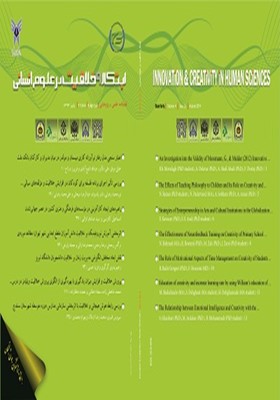The Effectiveness of Neurofeedback Training on Creativity of Primary School Students in Tehran: A Case Study
Subject Areas : Creativity and innovation from psychological, epistemological, educational and pedagogicalNarges Rahmati 1 , Reza Rostami 2 , Mohammad Reza Zali 3 , Jamileh Zarei 4
1 - دانشگاه تهران، کارشناس ارشد مدیریت کارآفرینی، تهران، ایران (نویسندة مسئول) n_rahmati@ut.ac.ir
2 - دانشگاه تهران، دانشیار گروه روانشناسی، تهران، ایران rrostami@ut.ac.ir
3 - دانشگاه تهران، استادیار گروه کارآفرینی، تهران، ایران Mrzali@ut.ac.ir
4 - دانشگاه تهران، دانشجوی دکتری روانشناسی، تهران، ایران jamileh.zarei@gmail.com
Keywords: Flexibility, Creativity, neurofeedback, primary school, Fluency, Originality, elaboration,
Abstract :
Objective: This study investigated the effectiveness of neurofeedback training on creativity among primary school students in Tehran. Method: Some 60 students with an average IQ between 90 – 119 were chosen, using available method. All the students were assessed by equated Quantitative Electro Encephalograph (QEEG), and The Torrance Tests of Creative Thinking (TTCT), then they were equated according to the gained grades and placed into two groups. One of the group was chosen as experimental accidentally and the other as control. In this experimental study, students received neurofeedback for 20 sessions while control group received no experiment. At the end of the experiment all the students of both groups were reassessed by Torrance Tests of Creative Thinking. Findings/Result: The neurofeedback group had meaningful change in creativity. Creativity was defined by the four most readily agreed upon divergent thinking abilities: (a) fluency (the ability to generate numerous ideas), (b) flexibility (the ability to see a given problem from multiple perspectives), (c) originality (the ability to come up with new and unique ideas) and (d) Elaboration (making details). Conclusion: Neurofeedback training can be used for increasing the levels of creativity in students.


